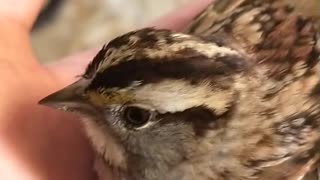Rescued cheetahs in pre-release area
These cheetahs had to be rescued, rehabilitated at a wildlife sanctuary, and now live in a pre-release area, waiting to get released back into the wild, where they belong. They still need to get fed, which means that they do not hunt, so they need to chase the car in order to get the food and exercise a little. Also, because it is such a big area, sometimes it takes a very long time for all of them to arrive.
The Cheetah (Acinonyx jubatus), is native to Africa and Asia, although it has been extirpated from nearly all of its Asian range. They could once be found from the shores of the Mediterranean and the Arabian Peninsula, west through central India, Pakistan, Afghanistan, Turkmenistan, Uzbekistan, and north to the northern shores of the Aral and Caspian Seas, but nowadays are limited to the central deserts of Iran. Although cheetahs still occur in several African countries, they now only occupy 10% of their historic range.
Five subspecies are recognized: Acinonyx jubatus hecki, in Northwest Africa; Acinonyx jubatus earsoni, in East Africa; Acinonyx jubatus jubatus, in Southern Africa; Acinonyx jubatus soemmerringi, in Northeast Africa; and Acinonyx jubatus venaticus, from Northern Africa to central India.
Cheetahs are classified as Vulnerable, although the subspecies Acinonyx jubatus venaticus and Acinonyx jubatus heckii are listed as Critically Endangered.
They can be found in dry forest, thick scrub, grassland and hyperarid deserts. They are only absent from montane and tropical forests.
Cheetahs are mostly known as the fastest land mammals, however, they are only able to sustain top speeds for a few hundred meters. If they don't succeed at their hunt by then, they need to give up and rest, otherwise they overheat.
Unlike other cat species, female cheetahs are solitary, accompanied only by their young, and males can be solitary or live in coalitions of two or three, usually consisting of brothers, but not necessarily.
-
 0:31
0:31
NataliaCara
1 year agoAdorable rescued Crab-eating Fox pup wants to catch what's making the weird noise
135 -
 0:35
0:35
Guckenberger
2 years agoRescued Bird
41 -
 2:02:39
2:02:39
Revenge of the Cis
3 hours agoEpisode 1342: Hush Money
32.5K10 -
 1:02:51
1:02:51
In The Litter Box w/ Jewels & Catturd
20 hours agoJudas Johnson Ouster Fails | In the Litter Box w/ Jewels & Catturd - Ep. 564 - 5/9/2024
45.4K50 -
 21:22
21:22
Stephen Gardner
4 hours ago🔴Trump OVERWHELMED WITH JOY over surprise turn of events!
33K112 -
 11:27
11:27
Morgonn
5 hours ago10 Things You DON'T KNOW about Riley Gaines Barker - EXCLUSIVE!!!
29.1K19 -
 46:01
46:01
ANDYFRISELLA
7 hours agoWhat High Performers Understand About Success - Ep 702 Q&AF
37.1K17 -
 3:04:36
3:04:36
Russell Brand
9 hours agoBREAKING: Pfizer Settles 10,000 Lawsuits For Hiding CANCER Risks! - Stay Free #362
220K497 -
 2:57:33
2:57:33
The Charlie Kirk Show
7 hours agoSpeaker Johnson's Dem Alliance + Biden's Rafah Threat + Vaccine Recall | Choe, Dr. Malone, Robison
129K127 -
 44:58
44:58
TheAlecLaceShow
8 hours agoGuest: Forgiato Blow | Liberty or Death for Trump | Hochul’s Racist Comment | The Alec Lace Show
44.1K10